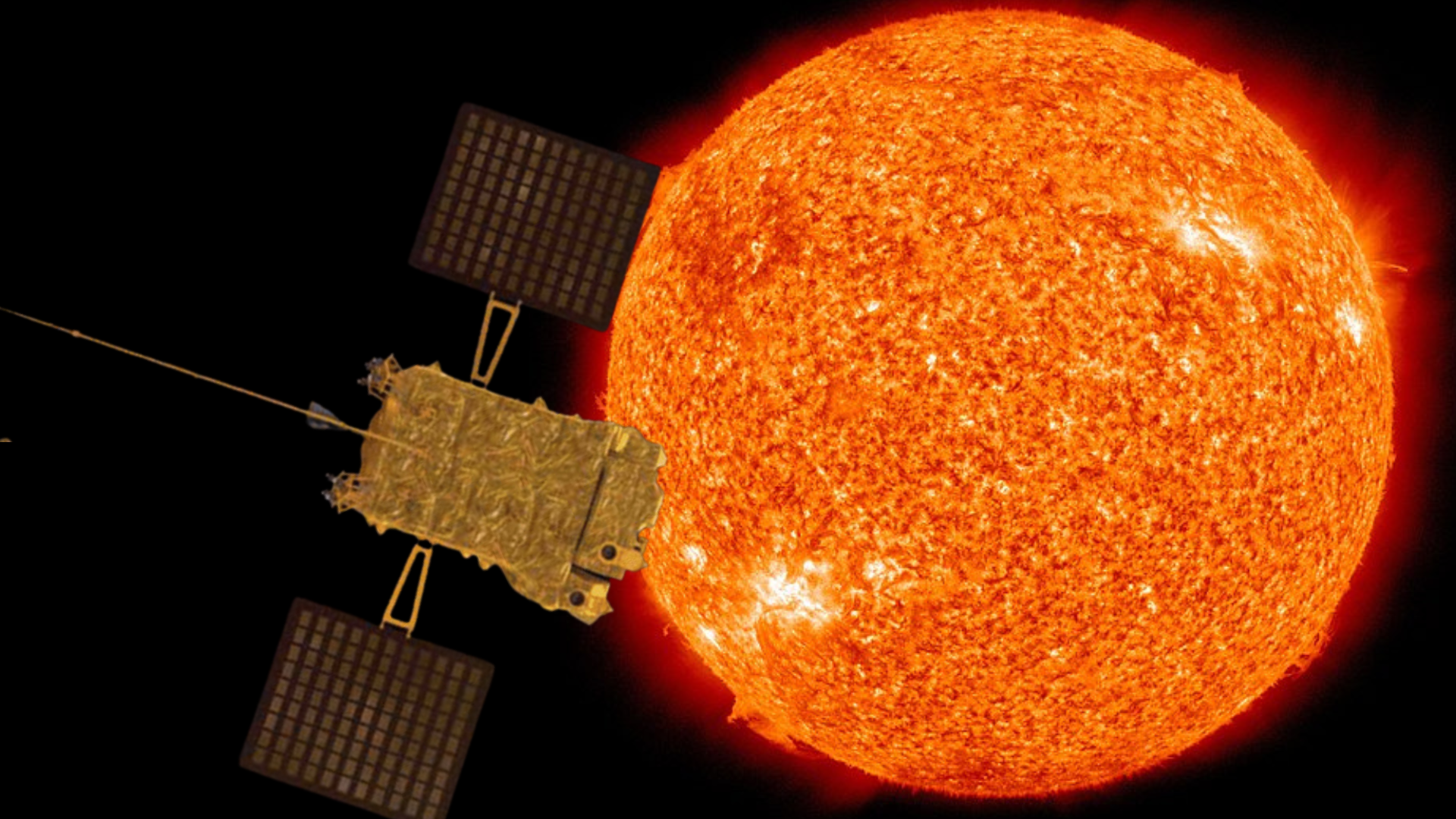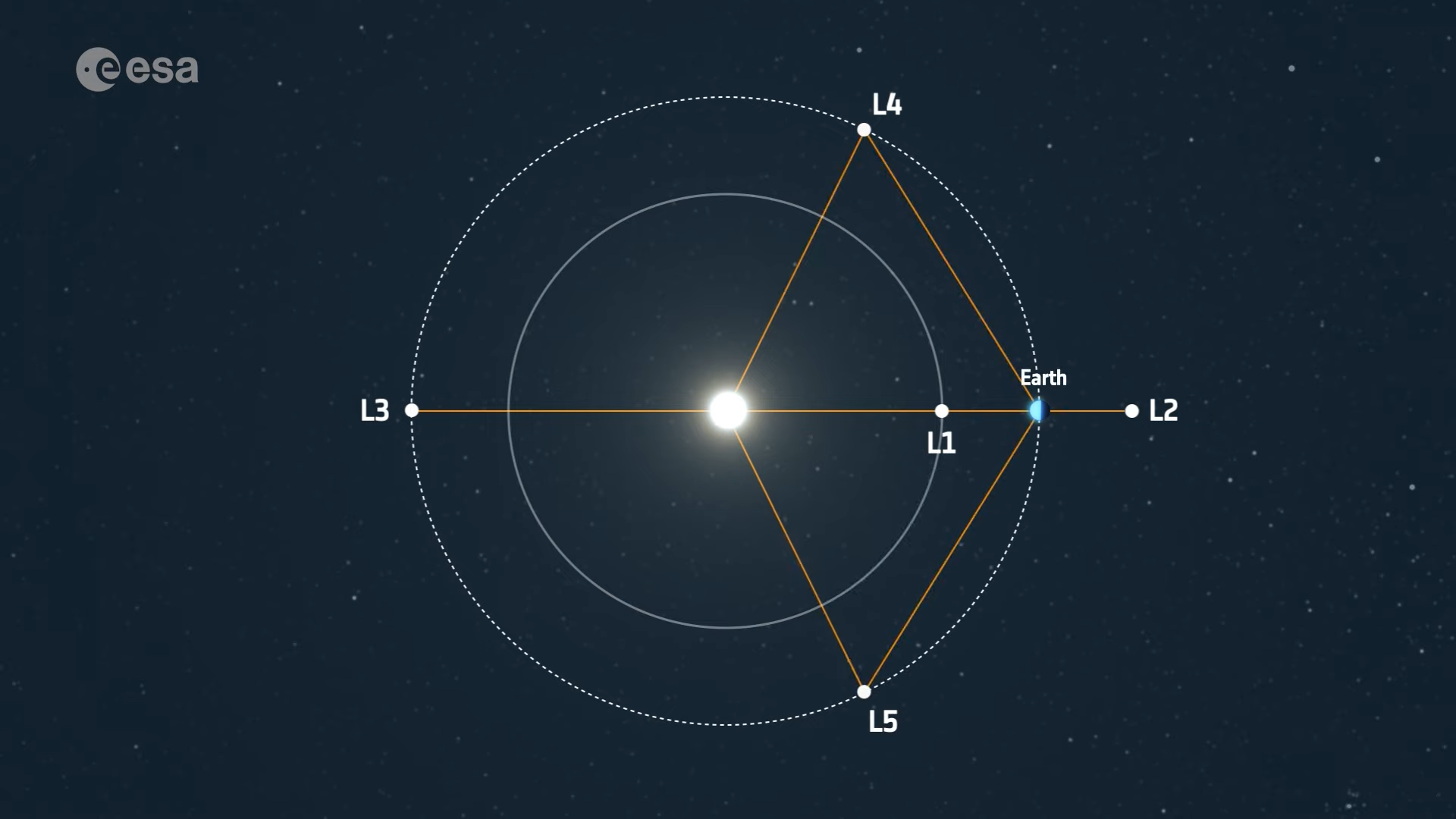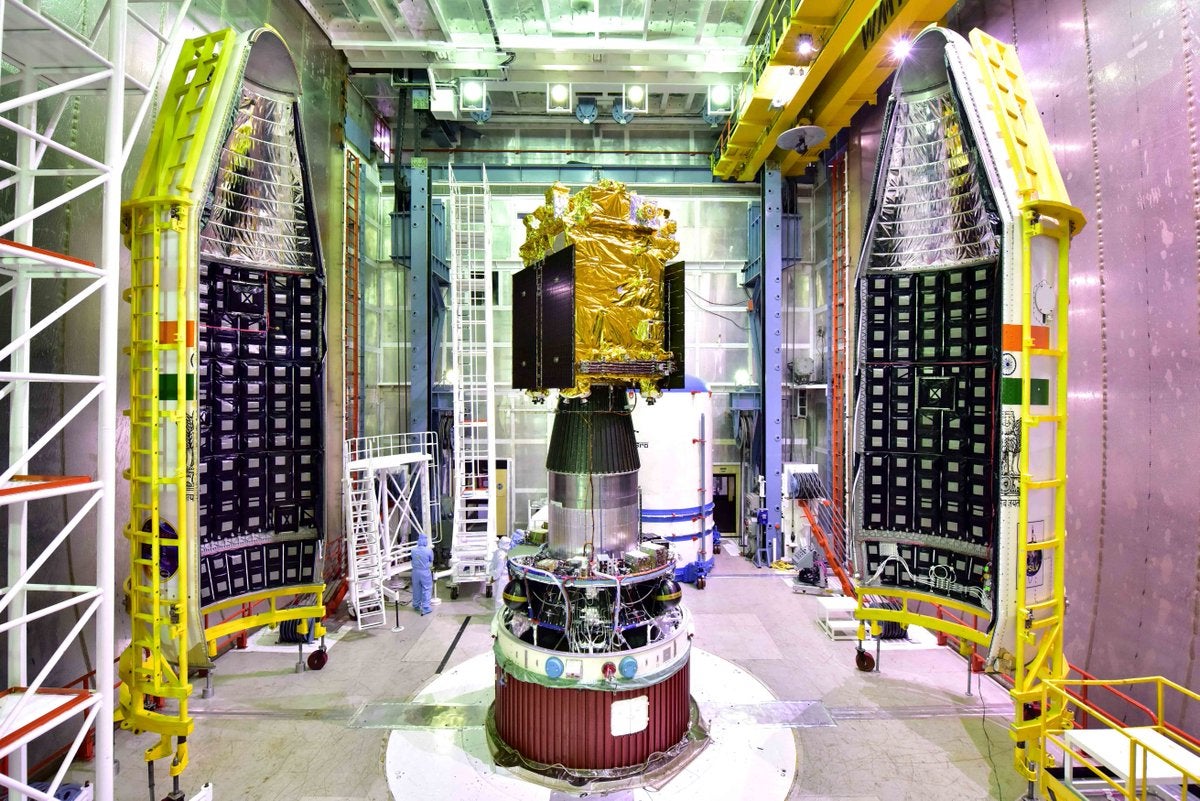
An illustration shows India’s Aditya-L1 spacecraft after launching to study the Sun. Credit: IRSO/ Robert Lea
Fresh on the heels of an inaugural Moon landing at the lunar South Pole last month, the Indian Space Research Organisation (ISRO) has done it again with the successful launch of its Aditya-L1 spacecraft. This mission, specifically designed to study the Sun, seeks to answer some of the most pressing questions about our nearest star.
Aditya-L1 took flight from the Satish Dhawan Space Centre, located on Sriharikota Island, atop ISRO’s Polar Satellite Launch Vehicle (PSLV) on Sept. 2. The spacecraft was deployed into low-Earth orbit roughly an hour after launch. Its remaining journey will see it travel some 93 million miles (150 million kilometers) over the course of around 110 days, ultimately entering a halo orbit at a gravitationally stable position between the Sun and Earth.
Aditya-L1 mission overview
Aditya-L1’s primary objective is a comprehensive examination of the Sun, particularly focusing on its outermost layer (the corona), the Sun’s surface (the photosphere), and the solar wind. Among the many mysteries the mission aims to address is the long-standing question of why the corona is substantially hotter than the photosphere, despite the corona being tenuous and far from the Sun’s core.
The spacecraft’s position at Lagrange point 1 (L1) — a gravitationally stable point some 900,000 miles (1.5 million km) from Earth — offers it a particularly strategic vantage point. This location allows Aditya-L1 to remain stable relative to Earth and the Sun, providing a continuous and uninterrupted view of our star.
The Aditya-L1 mission is expected to last roughly five years.

An illustration showing the various Lagrange points. Credit: ESAMission evolution and design
The Aditya-L1 mission has come a long way from its initial concept in 2008. Originally envisioned as a modest 880-pound (400 kilogram) satellite in low-Earth orbit, the mission’s scope has expanded over the past 15 years. For example, the spacecraft recently launched with a mass of nearly 3,300 pounds and its new mission profile sees it venturing far beyond low-Earth orbit.
ISRO’s innovation is evident in Aditya-L1’s design. The cube-shaped craft boasts a honeycomb sandwich structure, and its integrated miniaturized GPS receiver ensures real-time data on position, velocity, and time. When unfolded, two solar panels will help recharge Aditya-L1’s lithium-ion battery, ensuring a steady power supply.

An image of Aditya L1 in the cleanroom prior to its launch on September 2, 2023. Credit: ISROScientific instruments, at a glance
Aditya-L1’s spacecraft’s instrument suite is specially tailored to seek the answers to three primary questions: How do stars like the Sun sustain a superheated outer layer (corona)? How does the Sun’s magnetic field generate powerful solar storms? And how does the Sun’s variable magnetic field affect Earth’s atmosphere?
To help answer these pressing questions, Aditya-L1 comes equipped with seven specialized instruments.
Visible Emission Line Coronagraph (VELC): This instrument will observe the inner corona by looking toward the limb of the Sun. This approach allows it to easily focus on phenomena like CMEs and bursts of plasma from the Sun’s upper atmosphere (coronal loops), which will help researchers better understand the cause or causes of coronal overheating.
High Energy L1 Orbiting x-ray Spectrometer (HEL1OS): Primarily concentrating on hard, or high-energy, X-rays generated during solar flares, this instrument will monitor thermal and non-thermal emissions. The data it collects will provide researchers with insights into how solar flares are generated and evolve.
Solar Low Energy X-ray Spectrometer (SoLEXS): With a focus on soft, or low-energy, X-rays, this instrument will likewise shed light on the nature of solar flares. By measuring X-ray flux, SoLEXs will hopefully help researchers pin down the mechanism or mechanisms that drive coronal heating.
Solar Ultraviolet Imaging Telescope (SUIT): This ultraviolet telescope will capture images of the solar disk in near-ultraviolet wavelengths, with the goal of helping researchers understand how the photosphere and/or chromosphere transfer so much energy to the corona. SUIT was developed in collaboration with India’s Inter-University Centre for Astronomy and Astrophysics.
Magnetometer (MAG): Developed by the Laboratory for Electro Optics Systems, this magnetic sensor measures the strength and direction of the interplanetary magnetic field at the spacecraft’s L1 position. This instrument consists of two sets of sensors mounted on a 20-foot (6 meter) deployable boom, and the data it collects will be key to understanding events like coronal mass ejections (CMEs) and solar plasma waves.
Aditya Solar wind Particle Experiment (ASPEX): Consisting of two sensors and built by the Physical Research Laboratory at Ahmedabad, ASPEX’s focus will be studying the solar wind to better understand where charged particles originate and how they are accelerated. The Solar Wind Ion Spectrometer will measure solar wind particles (such as protons and alpha particles), while the Suprathermal and Energetic Particle Spectrometer will detect particularly high-energy ions.
Plasma Analyser Package for Aditya (PAPA): This plasma analyzer, developed by the Vikram Sarabhai Space Centre’s Space Physics Laboratory, will likewise focus on studying the solar wind. The instrument’s Solar Wind Electron Energy Probe and Solar Wind Ion Composition Anaylser will help create a record of variations in the composition, flux, and density of both electrons and ions in the solar wind over time.
As for the mission’s cost, while ISRO has not disclosed official figures, estimates from Indian media sources suggest a price tag of around $46 million — which is relatively modest when it comes to space exploration.
With the recent successful launch of Aditya-L1, India has now accomplished two impressive feats in just a few short weeks. True, the nation has been ramping up their space program for years, but now, it seems, they have solidified their position as a major player on the global space stage.





